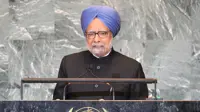Brewing brand width
By Venkatachari Jagannathan | 11 Mar 2002
 The grand idea behind the increasing integration of the Rs 841-crore Tata Tea and Tetley is to derive benefits from the synergies that the acquisition gave birth to. Says Tata Tea deputy managing director P T Siganporia: “We are now working towards a greater harmonisation of operations, and we have hired the Boston Consulting Group to chalk out a path for this.“ Officials of both the companies had detailed discussions on this and other issues at a conclave held in Goa recently.
The grand idea behind the increasing integration of the Rs 841-crore Tata Tea and Tetley is to derive benefits from the synergies that the acquisition gave birth to. Says Tata Tea deputy managing director P T Siganporia: “We are now working towards a greater harmonisation of operations, and we have hired the Boston Consulting Group to chalk out a path for this.“ Officials of both the companies had detailed discussions on this and other issues at a conclave held in Goa recently.“Informal meetings are currently being held at the senior executive level and certain project groups are working on specific assignments,“ says Siganporia. “Different teams have been formed to look at different aspects of integration.“ There are seven to eight areas of integration, among them tea sourcing, supply-chain management, growth and development of new products and markets, management information systems, and human resources.
 The one immediate impact of the acquisition for Tata Tea is that it has started selling tea to Tetley. “Earlier Tetley never used to buy tea from us, though it procures around 80,00,000 kg of tea from India every year. Now we are selling Tetley about 6,00,000 kg a year.“
The one immediate impact of the acquisition for Tata Tea is that it has started selling tea to Tetley. “Earlier Tetley never used to buy tea from us, though it procures around 80,00,000 kg of tea from India every year. Now we are selling Tetley about 6,00,000 kg a year.“With the commencement of operational integration, is a merger of the two entities the logical conclusion? Probably, but that will happen only after a reduction of the debt incurred on the Tetley acquisition, an end towards which the two companies are working. The recent sale of Tetley's US private label tea business - to Harris Tea for $15 million - is one such debt-reduction move.
Tetley, in the meantime, has been doing fairly well on its own. Siganporia says the company increased its market share in the UK over the last calendar year by 4 per cent to reach 25 per cent. Tetley's global sales went up by 3 per cent, while its earnings before interest and tax were higher by 34 per cent.
What about Tata Tea? The picture isn't exactly rosy on the domestic branded tea front, where a small storm is brewing. Blame that, for the most part, on reduced tea exports and the resultant surplus finding its way into the domestic market through competitively priced regional brands. “Market realisation has fallen below production cost for the second year running. India has become irrelevant in the export market after our traditional markets shifted their sourcing points,“ says Siganporia.
That is not good news for the Indian tea industry, and Tata Tea is the country's largest tea producer. It ranks second in the packet tea segment with a 20.1-per cent market share, behind Hindustan Lever's 36 per cent. It is this hegemony that Siganporia and his team are challenging.
 Tata Tea, which used to introduce new tea varieties once in two years, is now hitting the market with frequent launches. The company is also in the process of repositioning its existing brands. At the national level, the company will focus on three brands: the recently launched Tetley at the premium end, Tata Tea's Temptation (an Assam leaf tea) and Agni. The regional brands will be Kanan Devan, Gemini, Chakra and Agni Sholay.
Tata Tea, which used to introduce new tea varieties once in two years, is now hitting the market with frequent launches. The company is also in the process of repositioning its existing brands. At the national level, the company will focus on three brands: the recently launched Tetley at the premium end, Tata Tea's Temptation (an Assam leaf tea) and Agni. The regional brands will be Kanan Devan, Gemini, Chakra and Agni Sholay.“Our aim is to introduce two products every three months and have at least one product in every market segment,“ he says. If one includes the bulk tea segment, the new launch count comes to five over the last three months. But the new entrants have not made Siganporia sanguine. Though the overall branded tea market has grown, at the retail end the shift is towards cheaper regional brands.
That trend is unlikely to affect the Tetley launch, which has stirred up the 15,000,000-kg premium leaf segment (mostly Assam tea). This segment has thus far been dominated by Hindustan Lever's Rs 200-crore Taj Mahal brand, with competition from Society and Girnar being restricted to some pockets. Tata Tea has priced the Tetley range marginally higher than Taj Mahal, and Temptation slightly lower than Lever's competing brand.
“We believe the potential for Tetley in India is huge, given the limited development in the premium segment. This offers us a chance of bringing world-class choice to discerning tea drinkers, says Siganporia, who is hopeful about the Tetley brand notching sales of Rs 100 crore in a short period.
Taking on the well-entrenched premium brands is no easy task. With success on its mind, Tata Tea is following a communications strategy that focuses on the product and the product experience. The brand advertising strategy is in three parts: the brand's heritage, the tea's taste, aroma and colour, and the emotional bonding with the consumer. All the commercials will sign off with the line, 'A time for Tetley.'
Clearly, the Tata Tea-Tetley matrimony is brewing exciting times for both companies.
























